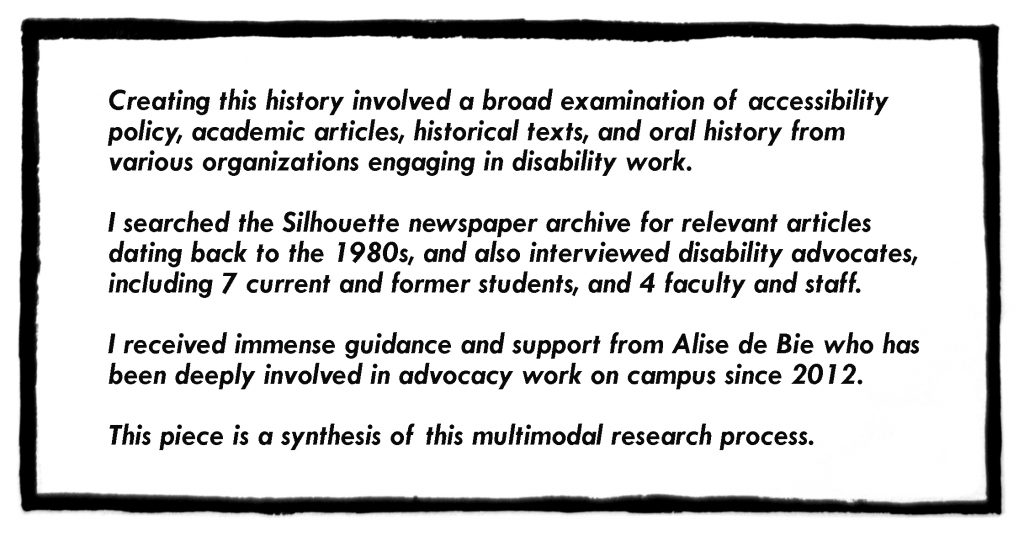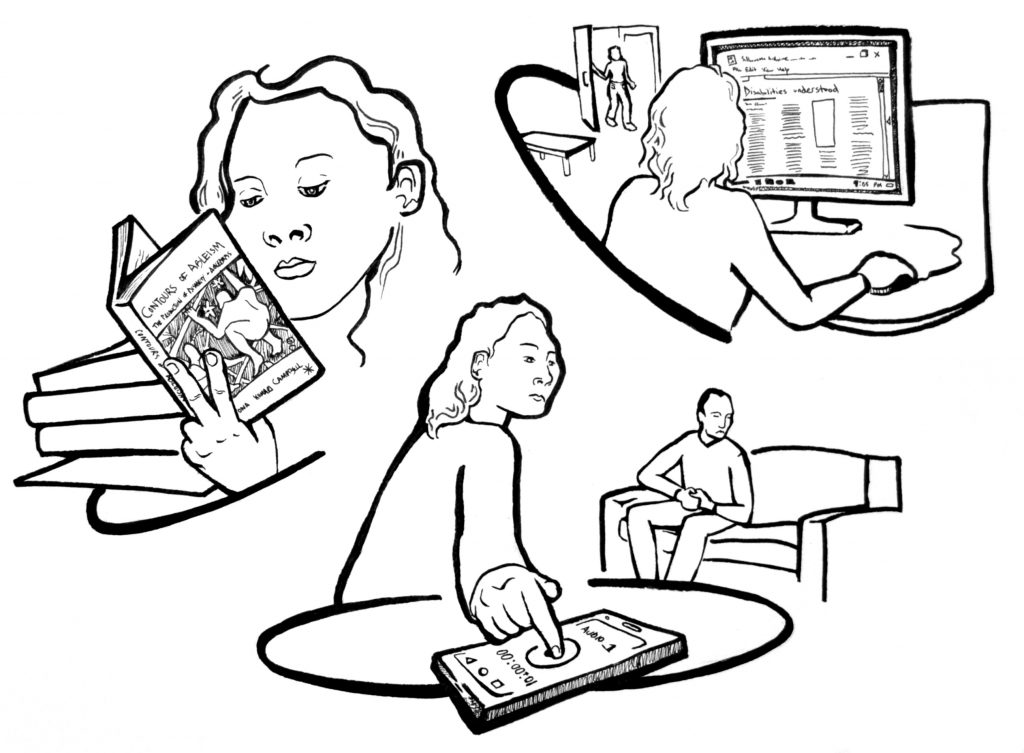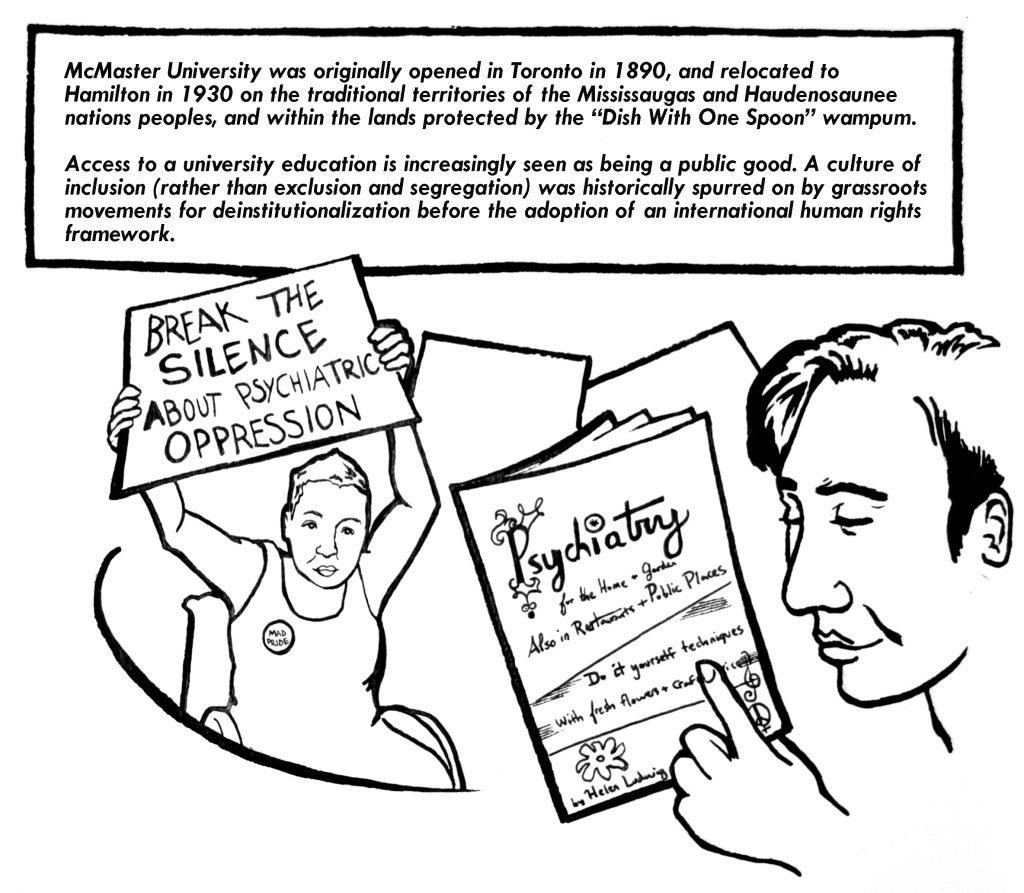@ McMaster

Creating an accessible university is a project of transformation. It requires that we assess and redesign campus environments and practices to eliminate the visible and invisible barriers that impact the teaching and learning experiences of students and faculty alike.

Creating this history involved a broad examination of accessibility policy, academic articles, historical texts, and oral history from various organizations engaging in disability work. I searched the Silhouette newspaper archive for relevant articles dating back to the 1980s, and also interviewed disability advocates, including 7 current and former students, and 4 faculty and staff. I received immense guidance and support from Alise de Bie who has been deeply involved in advocacy work on campus since 2012. This piece is a synthesis of this multimodal research process.

McMaster University was originally opened in Toronto in 1890, and relocated to Hamilton in 1930 on the traditional territories of the Mississaugas and Haudenosaunee nations peoples, and within the lands protected by the “Dish With One Spoon” wampum. Traditionally seen as a space of exclusivity, access to a university education is increasingly seen as being a public good. A culture of inclusion (rather than exclusion and segregation) was historically spurred on by grassroots movements for deinstitutionalization before the adoption of an international human rights framework.

